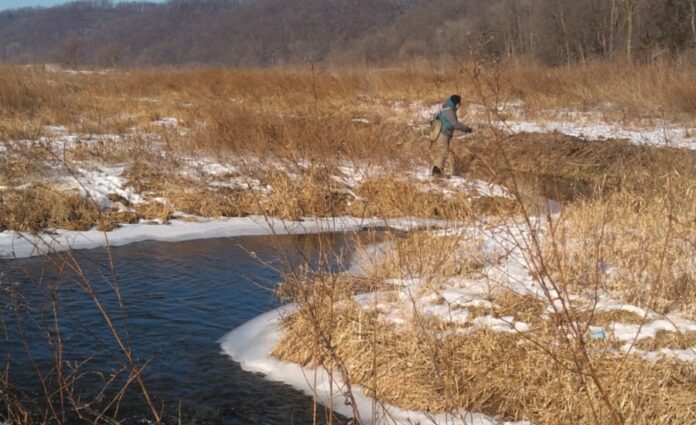Written by: PJ Smith, PJ’s Guide Service, Westby, WI
All photos by PJ Smith
The 2022 trout season has ended here in Wisconsin, but come the first Saturday of 2023 (January 7th this year) we’ll be right back at it. Every year, I look forward to the trout opener like a kid waiting for Christmas. This is a great time to get outside and enjoy the sport. Not only is the landscape quite breathtaking after a freshly-fallen snow, but fishing in the winter will make you a better angler by teaching you how fish move around and feed during different seasons, and by increasing the number of days you spend on the water. It’s also a great opportunity to scout your favorite rivers, looking for features such as springs that aren’t as easy to notice when the water is higher. Here are five tips to keep in mind next time you’re out doing some winter fishing:
1. Winterize your Leader
Change out your leader for a lighter-weight version for winter fishing. Lighter, thinner leaders will land softer and will cut through the water column more quickly without added weight. Plus, they’ll be less visible to picky trout in the low-water conditions of winter. I usually drop down to 4x during winter, but your mileage may vary.

2. Be Stealthy
When approaching the river, go slowly and be stealthy. Winter water can be low and clear, and the trout will spook easily. I will often get into the water to present a lower profile to the fish–even though it’s colder that way–because the fish are much less likely to see me when I’m off the bank. I usually move upstream, fishing small nymphs under an indicator. I’ve found that using thinner-bodied nymphs with a heavy bead will get them down faster into the deeper holes, further increasing my chances of a hookup.
3. Focus on the Midday Heat
There’s no rush to get on the water. Most winter trout fishing will be during just a few prime-time hours, so plan your trip for mid-morning to mid-afternoon in order to be out during the warmest part of the day. Make sure you have a good breakfast, since you’ll need extra fuel in your body to stay warm. Letting the sun rise a bit will also allow some of the bugs to start moving, which might trigger some feeding trout. Have a thermometer handy to check water temps. On really nice days, excessive snowmelt runoff in the late afternoon can actually cool things down and turn off the fishing, so be prepared for sudden endings to particularly nice days.

4. Bring a Net
A net will help to both land and to release the fish more quickly, which is always a good thing when handling trout. If temps are super cold or the wind is up, avoid taking trout out of the water at all–even for a quick photo–as they can freeze and be damaged just during that brief time exposed to the frigid air.
5. Take Frequent Breaks
Make sure to get off of the water and warm up from time to time. It’s also vital to stay hydrated, which will also help you stay warmer. Remember that caffeine and alcohol dehydrate you and can be counterproductive, no matter how pleasant that coffee or nip of whiskey might be at the time. Bring a snack with you to help keep your tank full. I’ve even been known to grill some brats at the back of the truck on my breaks.

P.J. Smith is owner and operator of PJ’s Guide Service in Westby, Wisconsin
Credit: Source link





























